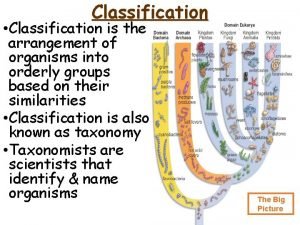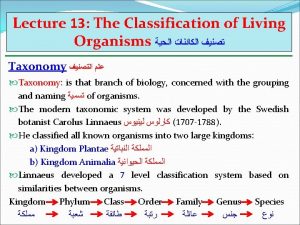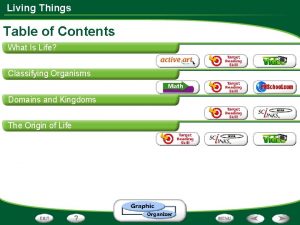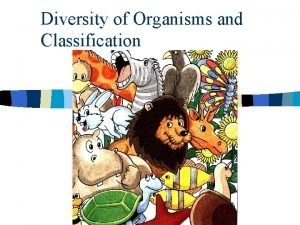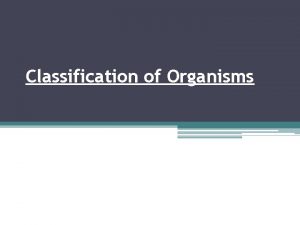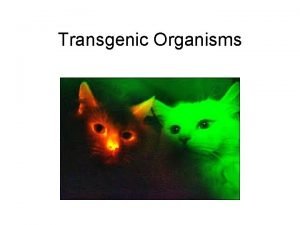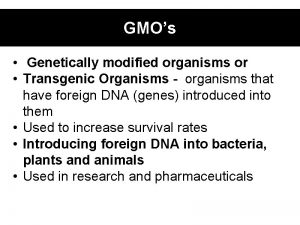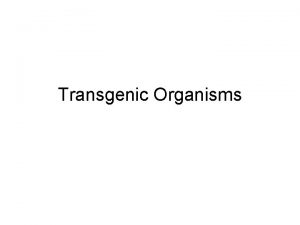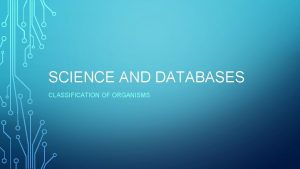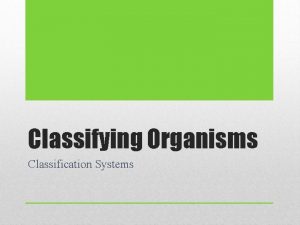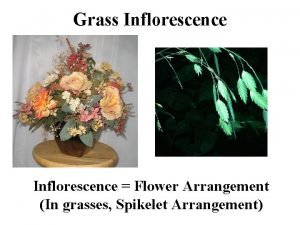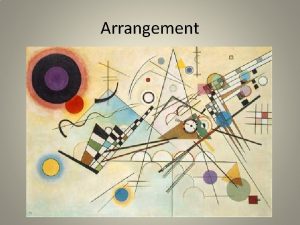Classification What is Classification the arrangement of organisms


























- Slides: 26

Classification

What is Classification? • the arrangement of organisms into orderly groups based on their similarities Classification is also known as taxonomy Taxonomists are scientists that identify & name organisms • •

Benefits of Classifying • organisms Accurately & uniformly names • &Prevents misnomers such as starfish jellyfish that aren't really fish Sea”horse”? ?

What’s the problem here?

Latin Names are Understood by all Taxonomists

Carolus Linnaeus 1707 – 1778 • 18 th century taxonomist • Classified organisms by their structure Father of taxonomy •

Standardized Naming • Binomial nomenclature still used today Turdus migratorius • Genus species • Latin • Italicized in print • Capitalize Genus only American Robin

Binomial Nomenclature

Classification Groups • Taxon is a category into which related organisms are placed • There is a hierarchy of groups (taxa) from broadest to most specific

Hierarchy-Taxonomic Groups BROADEST TAXON Domain Kingdom Phylum Class Order Family Genus Species

Do Kentucky People Climbing Over Fences Get Scratched?


Relationships between Taxa • Phylogeny is the evolutionary history of a species or group of species • Often showed as a branching “family tree” • Cladistics: classfication based on common ancestry

Cladogram Diagram representing how organisms could be related based on shared, derived characteristics such as feathers, hair, or scales 14

Dichotomous Keys • A tool that allows the user to determine the identity of items in the natural world • Consist of a series of choices that lead the user to the correct name of a given item. • "Dichotomous" means "divided into two parts". Therefore, dichotomous keys always give two choices in each step. 15

INTRODUCTION TO THE CLASSIFICATION OF LIFE

Domains • Broadest, most inclusive taxon • Three domains –(1)Archaeabacteria and (2)Eubacteria are unicellular prokaryotes (no nucleus or membrane-bound organelles) –(3)Eukarya are more complex and have a nucleus and membrane-bound organelles 17

Archaea old and live in harsh environments and may represent the first cells to have evolved. Sewage treatment plants, thermal vents, etc.

Eubacteria, some of which cause human diseases, are present in almost all habitats on earth. Live in the intestines of animals

Domain Eukarya is Divided into Kingdoms • Protista (amoeba, algae…) • Fungi (mushrooms, yeasts …) • Plantae (multicellular plants) • Animalia (multicellular animals) 20

Protista • Most are unicellular • • Very diverse! Some are multicellular –Some are autotrophic, some heterotrophic • Sub-divided into “animal-like”, “plantlife”, and “fungus-like” groups –SLIME MOLDS, ALGAE, PARAMECIUM/AMOEBAS 21

• Multicellular, except yeast • Absorptive heterotrophs (digest food outside their body & then absorb it) Fungi

Plantae • Multicellular • Autotrophic • Absorb sunlight to make glucose – Photosynthesis

Animalia • Multicellular • Ingestive heterotrophs (consume food & digest it inside their bodies) Feed on plants or animals • 24

25

 Why do organisms interact with other organisms
Why do organisms interact with other organisms Unicellular and multi cellular
Unicellular and multi cellular Classification arrangement
Classification arrangement Arrangement of organisms
Arrangement of organisms Webster and weber classification of fungi
Webster and weber classification of fungi Organisms taxonomy
Organisms taxonomy Prenucleus
Prenucleus Living things grow images
Living things grow images It is the arrangement or classification
It is the arrangement or classification Classification arrangement
Classification arrangement Hình ảnh bộ gõ cơ thể búng tay
Hình ảnh bộ gõ cơ thể búng tay Lp html
Lp html Bổ thể
Bổ thể Tỉ lệ cơ thể trẻ em
Tỉ lệ cơ thể trẻ em Chó sói
Chó sói Thang điểm glasgow
Thang điểm glasgow Chúa yêu trần thế
Chúa yêu trần thế Các môn thể thao bắt đầu bằng tiếng chạy
Các môn thể thao bắt đầu bằng tiếng chạy Thế nào là hệ số cao nhất
Thế nào là hệ số cao nhất Các châu lục và đại dương trên thế giới
Các châu lục và đại dương trên thế giới Công thức tính thế năng
Công thức tính thế năng Trời xanh đây là của chúng ta thể thơ
Trời xanh đây là của chúng ta thể thơ Mật thư anh em như thể tay chân
Mật thư anh em như thể tay chân Phép trừ bù
Phép trừ bù Phản ứng thế ankan
Phản ứng thế ankan Các châu lục và đại dương trên thế giới
Các châu lục và đại dương trên thế giới Thơ thất ngôn tứ tuyệt đường luật
Thơ thất ngôn tứ tuyệt đường luật


